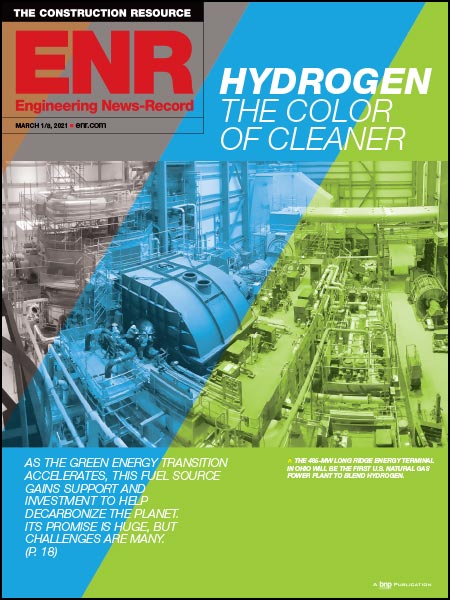The technology is largely carbon-neutral, the power is dispatchable for base-load demand, and supplying the fuel employs local workers collecting forestry waste. Yet only a handful of biomass powerplants are under construction now.
Developers say they are holding back on new projects, citing regulatory uncertainty. If stronger federal policies to support renewable energy were in place, they add, biomass plants could provide dependable base-load power and steady jobs.
By contrast, wind and solar power, which tend to garner much more attention, are poor producers when the wind doesn't blow or the sun doesn't shine. Biomass, however, is a fuel that, like coal or natural gas, can be stockpiled and combusted to serve load as needed. It consists of recently living organic material—such as woody forestry and urban waste, woody crops, herbaceous energy crops and the like—that can be regenerated on a human timescale.
Biomass fuels have different heating values, but "torrefied" fuel—typically heated in low oxygen at 250° to 300°C to burn off moisture and produce biochar—has a heating value close to coal and "could be a one-to-one replacement for coal," says Stan Rosinski, manager of renewable-energy programs for the Electric Power Research Institute (EPRI), Palo Alto, Calif.
Biomass is a proven power-generation fuel. "With over 11 GW of installed capacity, grid-connected biomass power generation is second only to wind as the largest source of non-hydroelectric renewable electricity in the United States," says an EPRI report.
The bulk of that capacity provides combined heat and power for industrial facilities. Only about 2,000 MW of biomass capacity serves grid load, estimates Bob Cleaves, president of the Biomass Power Association (BPA). About six plants are under construction around the U.S.
One of the largest is the $500-million, 100-MW Gainesville, Fla., Renewable Energy Center (GREC). Fagen Inc., of Granite Falls, Minn., began work in March 2011 on a 32-month construction schedule as engineering, procurement and construction contractor (EPC). The bubbling fluidized-bed boiler is a common plant technology; the 930,000-lb-per-hour Metso boiler is one of the largest in the U.S.
One Million Green Tons of Fuel
GREC will use one million green tons of fuel per year, consisting of clean woody waste only, collected from within a 75-mile radius of the city. Gainesville Regional Utilities will purchase 100% of its output under a 30-year power-purchase agreement (PPA) with American Renewables LLC, the Boston-based developer. The PPA is for a levelized cost of electricity of 13.9¢ per kilowatt-hour over the 30-year period.
"That's higher than natural gas, but the [price] volatility will be better," says Josh Levine, vice president of project development for the developer.
A second biomass project with an identical boiler is nearing completion outside Sacul, Texas. American Renewables developed the Nacogdoches Generating Facility but sold it to Southern Power in October 2009, a month before construction began. The plant has a 20-year PPA with Austin (Texas) Energy. Fagen is the EPC contractor for that project as well as for the $180-million, 49.9-MW Halifax County Biomass project, South Boston, Va.
NOVI Energy, Novi, Mich., is developing the Halifax County plant under a build-own-transfer agreement with the Northern Virginia Electric Cooperative. The plant has a stoker-fired, fluidized-bed boiler with a hydro-cooled shake table—"very simple, proven technology," says Anand Gangadharan, NOVI's president.
"Biomass projects are good options for economically needy counties," Gangadharan says. This project will employ 40 to 60 three-man teams to collect fuel for the plant, as well as offering construction jobs and the operators' jobs. It is sited on a brownfield but will be added back to the county's tax base. Construction started in December 2010; completion is expected in the third quarter of 2013.
For a contractor, "these are pretty good, straightforward projects," says Evan Fagen, president and COO of Fagen Inc. There is a technology risk, but it's a proven technology. The wood-handling yard and fuel supply are peculiar to this type of plant, but the material-handling equipment is "not much different from a coal plant," he says.
But biomass is a tough market, says John Koslosky, general manager of construction projects for Babcock & Wilcox Construction Co. Inc., Barberton, Ohio. Babcock & Wilcox is EPC for a new $275-million, 75-MW biomass plant in an old paper mill in Berlin, N.H., developed by Cate Street Capital, Portsmouth, N.H, But to be viable, biomass needs a driver, such as a renewables portfolio standard, renewable-energy credits or other incentive, he says.
Low Gas Prices, Regulatory Uncertainty
Chief among the challenges to biomass power are the historically low prices of natural gas right now, says BPA's Cleaves. Pending actions by the Environmental Protection Agency also worry developers, such as the Industrial Boiler Maximum Achievable Control Technology rule and the Non-Hazardous Secondary Materials rule. The first will regulate air emissions and the second biomass combustion as a non-hazardous waste. "There's a fair amount of regulatory uncertainty," and it's giving developers pause, Cleaves says. "We expect a rulemaking in June."
A 2010 report from the Manomet Center for Conservation Sciences challenges the assumption that biomass combustion is carbon-neutral because it releases only the carbon absorbed by the trees as they grew. The report's findings remain controversial, yet the Massachusetts Dept. of Energy Resources early this month released standards based on them, requiring a complicated tracking and certification regime to show a 50% reduction in greenhouse gases over a 20-year period, Cleaves says.
Despite uncertainties, development continues for some biomass projects—but they may not get built. Without congressional action, tax incentives will expire on Dec. 31, 2013, ending what has been a good run for a promising technology.





